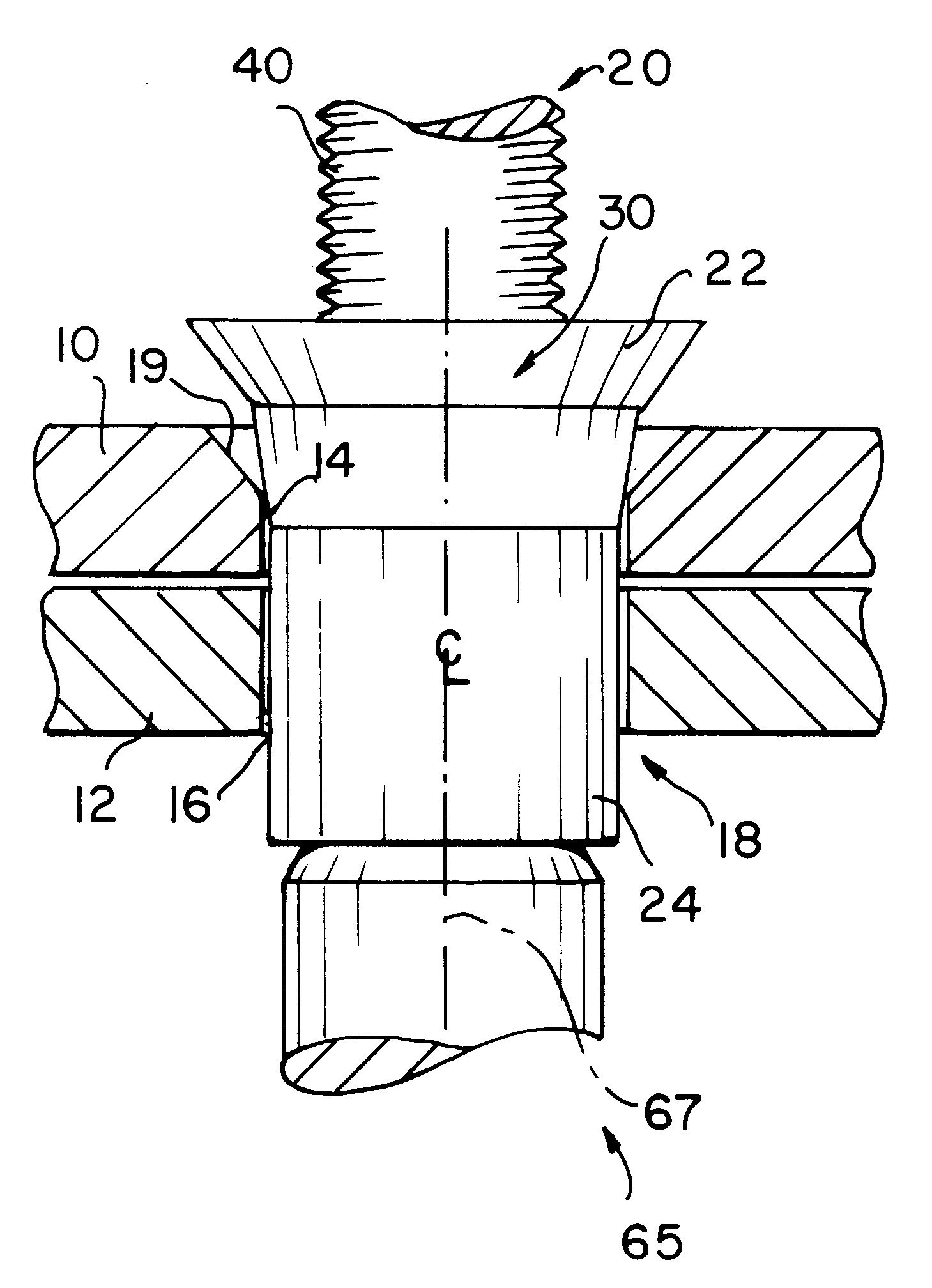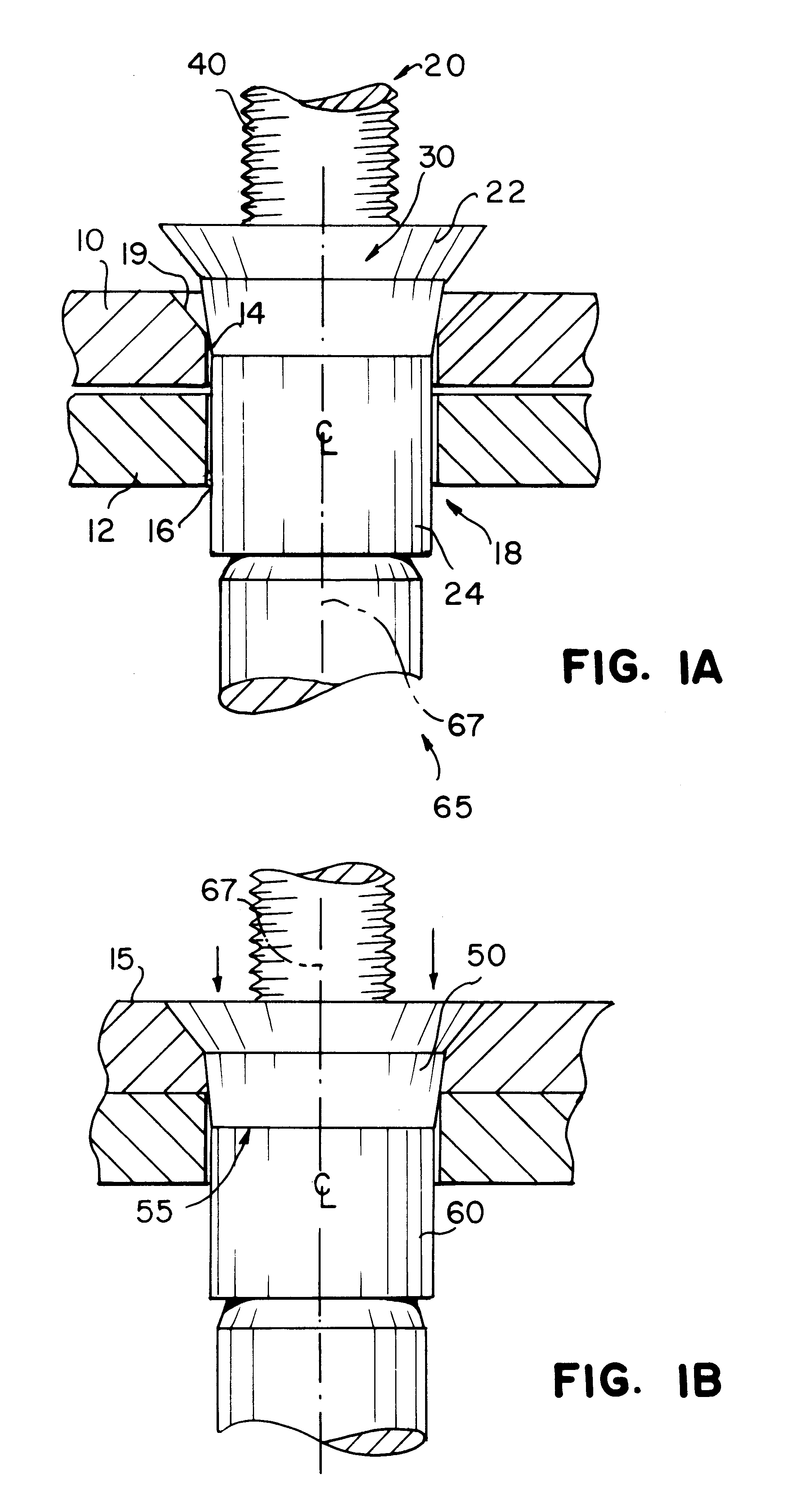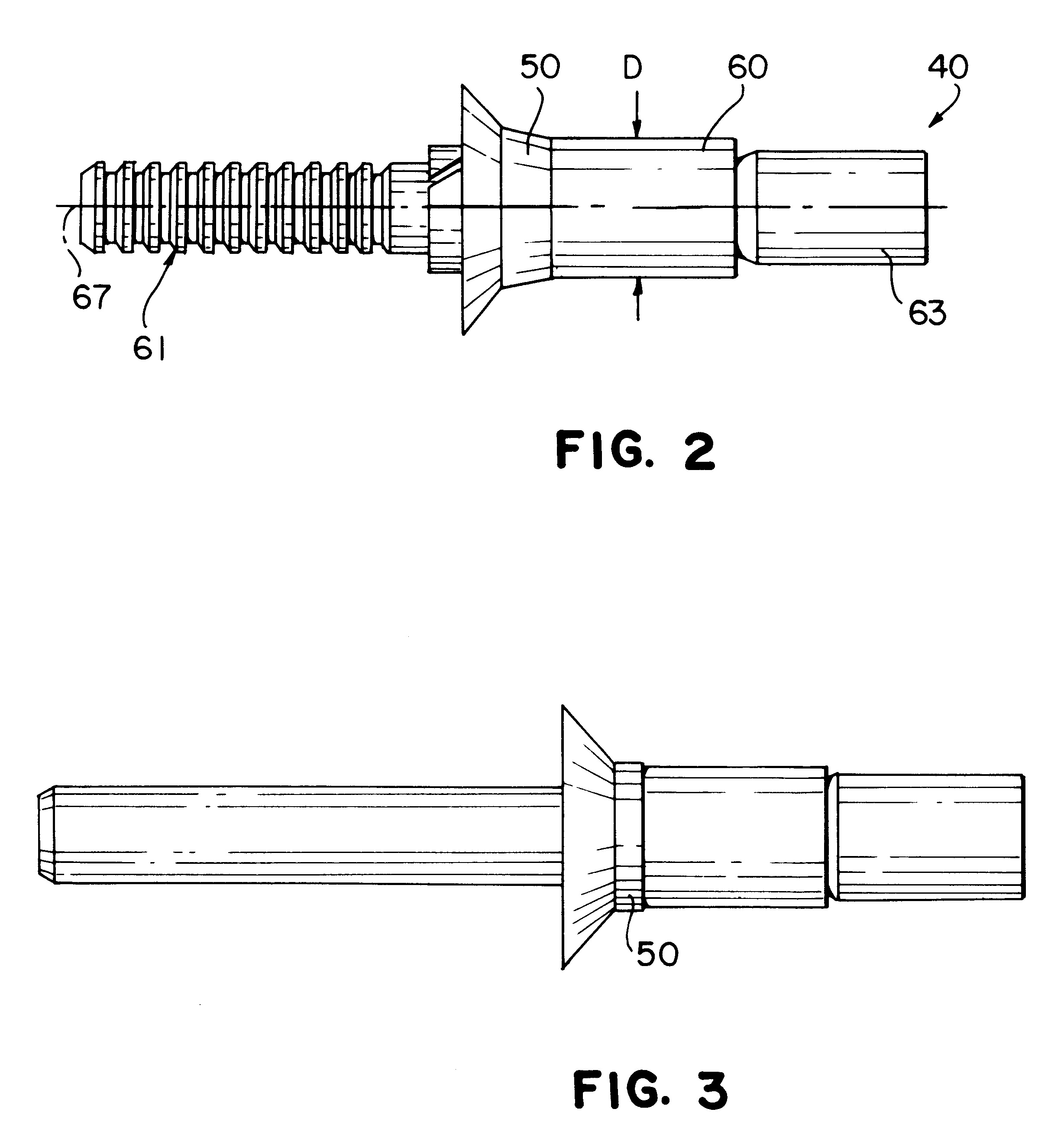Tapered shank rivet
- Summary
- Abstract
- Description
- Claims
- Application Information
AI Technical Summary
Benefits of technology
Problems solved by technology
Method used
Image
Examples
Embodiment Construction
Reference is now invited to FIGS. 1A and 1B which show a blind rivet assembly according to the invention. Specifically, FIGS. 1A and 1B illustrate the riveting together of a work piece, comprising a pair of panels, sheets, or work pieces 10 and 12, using a blind rivet 20 according to the invention. The work pieces 10, 12 include aligned holes or apertures 14, 16 which form a bore 18 for receiving the blind rivet 20 of the present invention. The holes 14, 16 may be drilled or otherwise suitably formed in the work pieces 10, 12. The bore 18 is preferably substantially straight and cylindrical. A tapered or countersink region 19, however, may be provided in an upper portion of the bore 18 for accommodating a flush type rivet head. Such a tapered or countersink region 19 is shown in FIG. 1A. It will be apparent to those skilled in the art, however, that a radially extending head or protruding head may also be used in the present invention and in that case, the entire bore 18 would be su...
PUM
| Property | Measurement | Unit |
|---|---|---|
| Angle | aaaaa | aaaaa |
| Force | aaaaa | aaaaa |
| Corrosion properties | aaaaa | aaaaa |
Abstract
Description
Claims
Application Information
 Login to View More
Login to View More - Generate Ideas
- Intellectual Property
- Life Sciences
- Materials
- Tech Scout
- Unparalleled Data Quality
- Higher Quality Content
- 60% Fewer Hallucinations
Browse by: Latest US Patents, China's latest patents, Technical Efficacy Thesaurus, Application Domain, Technology Topic, Popular Technical Reports.
© 2025 PatSnap. All rights reserved.Legal|Privacy policy|Modern Slavery Act Transparency Statement|Sitemap|About US| Contact US: help@patsnap.com



